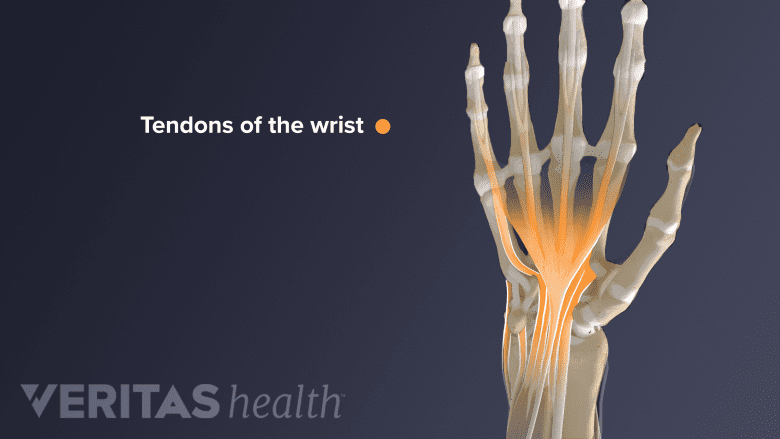Inflammation can cause soft tissues in the hand, wrist, or lower arm to interfere with nearby nerves or joints, causing pain and other symptoms. These symptoms can mimic carpal tunnel syndrome in several instances.

Tendon-related pain in the wrist can mimic carpal tunnel syndrome.
In This Article:
- Is My Hand and Wrist Pain Caused by Carpal Tunnel Syndrome or Something Else?
- Carpal Tunnel Syndrome vs. Soft Tissue Inflammation
Hand and Wrist Pain from Tendon Injuries
Inflammation can strike tendons (tendonitis) or the synovium, a sheath that lines and protects the tendon (tenosynovitis). Or tendons can degenerate and become damaged (tendinosis). Whatever the mechanism, the end result is a tendon that can no longer slide easily through the synovium, which causes symptoms of pain and stiffness.
See What Is the Difference Between Tendonitis, Tendinosis, and Tendinopathy?
There are two main tendon injuries that can affect the hand and be mistaken for carpal tunnel syndrome:
De Quervain’s tenosynovitis
De Quervain’s tenosynovitis (also known as De Quervain’s Tenosynovitis, tendonitis, disease, or syndrome) occurs when two tendons on the top of the thumb become irritated. The irritation causes pain on the back of the thumb when an individual makes a fist or moves the wrist, plus numbness or stiffness in the thumb.
See Symptoms and Risk Factors for De Quervain’s Tenosynovitis
Trigger finger
When the tendon sheath (synovium) becomes inflamed in a finger or thumb, the tendon may catch on the sheath, causing the finger to “stick” in a bent position, then snap back into place. Trigger finger most frequently affects the thumb or ring finger, and can also affect multiple fingers at once.
Read more about Trigger Finger (Stenosing Tenosynovitis) on Arthritis-health.com
Hand and Wrist Pain from Joint or Blood Vessel Problems
These four conditions involve disorders with the joints of the hands and wrist or the blood vessels, which can trigger symptoms similar to those of carpal tunnel syndrome:
Compartment syndrome
Muscle groups, plus the nerves and blood vessels that support them, are surrounded by protective sheaths known as fascia, and this encapsulated tissue is called a compartment. If swelling develops in a compartment—most often as the result of a traumatic injury—the resulting pressure can cut off blood supply to the area, causing symptoms of pain, numbness, and tingling. When compartment syndrome affects one of the compartments of the hand or forearm, these symptoms can mimic carpal tunnel syndrome.
Raynaud phenomenon
Raynaud phenomenon is a condition in which blood vessels to the fingers, toes, nose, and/or ears spasm and blood flow is cut off, causing skin to turn white and then blue, and eventually red as blood flow returns. The condition is not painful. Symptoms are usually triggered by cold temperatures or strong emotions.
Arthritis in hand or wrist
The joints of the hand and wrist can degenerate and/or become inflamed, causing pain, stiffness, and weakness in grip (numbness or tingling is rare). Joint pain is commonly a symptom of arthritis, with the two main types being osteoarthritis and rheumatoid arthritis. Osteoarthritis often strikes a single joint, while rheumatoid arthritis usually affects multiple joints in the both hands simultaneously.
Pseudogout
Calcium pyrophosphate dihydrate arthritis, also known as pseudogout, causes crystals to form in the joints, causing pain, redness, and swelling, but not numbness or tingling. A common site for pseudogout to occur is the wrist joint.
One challenge of diagnosing the cause of hand and wrist pain is many of the conditions listed above can themselves trigger carpal tunnel syndrome or another condition.
See Diagnosing Carpal Tunnel Syndrome
With many of these conditions having overlapping symptom profiles—and sometimes coexisting—it is important for individuals experiencing hand or wrist pain, numbness, tingling, or weakness to see a physician.
There are several physical and electrodiagnostic tests (such as electromyography or nerve conduction test) that physicians can do to pinpoint the cause of symptoms.

